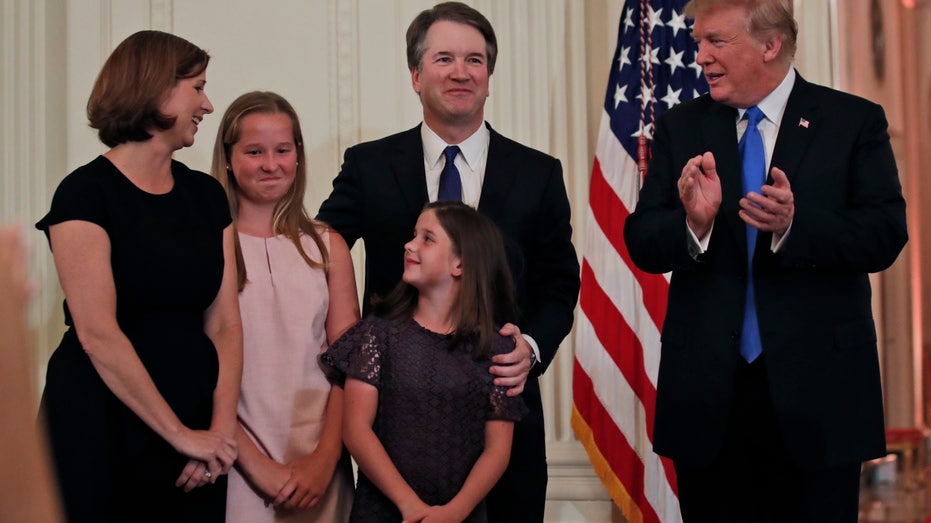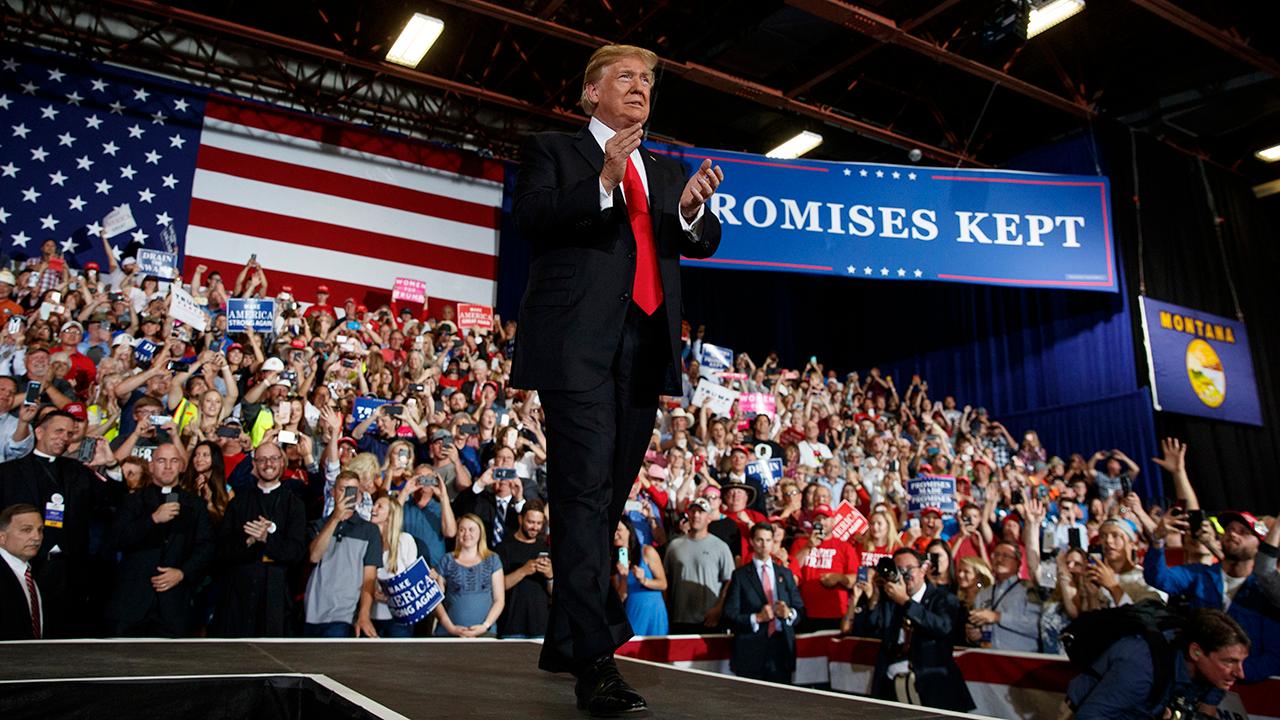Trump's first two years in office: A look at his biggest achievements and failures
It’s been exactly two years since, after a bitter scorched-earth presidential campaign in which he promised to make America great again, real-estate mogul Donald Trump was inaugurated as the 45th president of the United States.
Now, nearly halfway through his term, as he’s faced with increased scrutiny and the new challenge of a divided Congress, has Trump succeeded in fulfilling the promises he made to avid supporters during the presidential election?
Here’s a look at some of the biggest accomplishments of the White House in the past two years – and the missed opportunities that could haunt Trump heading into what’s likely to be a crowded 2020 presidential election.
Successes
Taxes: After almost a year of negotiations, Trump signed into law the Republican-passed Tax Cuts and Jobs Act, the largest overhaul of the U.S. tax code since Ronald Reagan occupied the Oval Office. The sweeping legislation -- perhaps the biggest accomplishment so far of the Trump administration -- slashed the corporate tax rate to 21 percent from 35 percent and temporarily reduced individual taxes.
During the election, Trump assured voters that he favored cutting taxes at all income levels, with the largest benefits going to the highest-income households.
Regulation: While campaigning against Democrat Hillary Clinton, Trump assured businesses he would roll back regulation. Within its first five months, the Trump administration had withdrawn or delayed 860 proposed regulations, the beginning of a regulatory overhaul meant to bolster economic growth.
The deregulation effort included the easing of financial restrictions put in place under the Obama administration in the wake of the 2008 financial crisis.
“One size fits all, those rules just don't work,” the president said in March. “As a candidate, I pledged that we would rescue … community banks from … the disaster of Dodd-Frank. And now we're keeping that commitment.”
As a candidate, I pledged that we would rescue … community banks from … the disaster of Dodd-Frank. And now we're keeping that commitment.”
Trump rolled back key sections of the Dodd-Frank Act, which was adopted to protect investors from another financial crisis.

President Donald Trump talks with Judge Brett Kavanaugh his Supreme Court nominee, and his family in the East Room of the White House, Monday, July 9, 2018, in Washington. (AP Photo/Alex Brandon) (AP)
SCOTUS: In his first two years in office, Trump has nominated 161 federal judges, 85 of whom have been confirmed, according to Ballotpedia. As of Dec. 26, there are still 143 vacancies. In 2016, Trump indicated he would look to the example of Supreme Court Justice Antonin Scalia, who died in 2016, as a guide for who he’d nominate to the federal bench.
So far, Trump has also nominated two Supreme Court judges, including Neil Gorsuch, who was confirmed in April 2017, and Brett Kavanaugh, who was confirmed in September 2018.
Kavanaugh’s nomination, however, likely created a headache for Trump: After the judge was nominated, allegations of past sexual misconduct by Kavanaugh came to light, sparking furious political infighting and nationwide protests. Kavanaugh denied the allegations. He was narrowly confirmed by the Senate 50-48, along party lines.
Health care: The Trump administration has been working to fulfill the president’s campaign promise to repeal and replace the Affordable Care Act (ACA), one of the biggest legislative accomplishments of the Obama administration, and it looks like they’re getting close to doing so.
When Republicans passed the tax overhaul, they included a provision that repealed the individual mandate, which required Americans to either get health insurance or face a financial penalty. The Supreme Court originally upheld the ACA, commonly known as ObamaCare, under the premise that the mandate was a tax. Although Congress does not have the ability to require people to buy health insurance, or a car, or a house, that particular provision was considered part of Congress’ taxing authority.
Texas Attorney General Ken Paxton spearheaded a lawsuit after the mandate was removed, arguing that because Congress had eliminated a key provision in the legislation, it was no longer constitutional. A federal judge in Texas struck down the law as unconstitutional, although it will remain in place for now because the ruling is expected to be appealed to the Supreme Court.
Failures:
Border wall: On the other end of the spectrum, however, Trump has yet to fulfill probably the lynchpin promise of his campaign: A wall along the southern border, paid for by Mexico. Although he shut down the government -- on Sunday, it will have been partially closed for a record 29 days -- to demand $5 billion in border wall funding, Congress has remained at an impasse.
Nobody builds better walls than me
“I would build a great wall, and nobody builds walls better than me,” Trump said in 2015. “I’ll build a great, great wall on our southern border, and I’ll have Mexico pay for that wall. Mark my words.”
Coal and steel: Trump ran on the promise -- one that resonated with workers -- to revive the coal and steel industries.
“You know what you can’t hurt? Coal. You can do whatever you want to coal. Very important. … We are back. The coal industry is back,” he said at a 2018 rally in West Virginia.
Although Trump has signed legislation overturning environmental regulations put in place under the Obama administration, more coal-fired power plants have closed in Trump’s first two years than in the entirety of Barack Obama’s first term, according to Reuters.
In 2017-2018, more than 23,400 megawatts of coal-fired generation were shut, compared to 14,900 megawatts from 2009-2012. The number of U.S. coal plants is expected to continue to decline, as consumers turn toward cleaner and less expensive sources of energy.
And while Trump might credit his tariff on steel imports with being the savior of the steel industry, American steel companies seem to be facing a downturn.
“Our steel industry was dying, and now it’s very vibrant,” he said in January.
CLICK HERE TO GET THE FOX BUSINESS APP
But that’s not quite the case: According to The New York Times, in the 10 months since the White House slapped a 25 percent tariff on steel imports, prices in the U.S. have fallen to the levels seen before the tariffs were announced. Hiring in the steel sector, meanwhile, remains stagnant, mostly because so many plants rely on automation.
Russia: It’s not possible to look back at Trump’s first two years in office and not include the significance of special counsel Robert Mueller’s investigation into Russian interference during the 2016 presidential election. The president may have decried it as a "witch hunt," but the investigation has dogged almost half of Trump's time in office.
The president came under renewed scrutiny in August after former campaign chairman Paul Manafort was found guilty on eight counts of financial crimes, including tax fraud. His former personal attorney Michael Cohen also pleaded guilty to making illegal campaign contributions, and said he’d been directed to do so by Trump.




















